Bermuda Grass Calendar: Essential Seasonal Guide
- February 29, 2024
- 2 comment
Looking for an easy way to keep your Bermuda grass healthy and vibrant? This Bermuda grass care calendar has been a game-changer for me, and I’m confident it can work wonders for your lawn too. Designed with simplicity and proven lawn care practices, this guide will help transform your yard into the standout feature of the neighborhood. Whether your lawn needs a little TLC or you’re helping a neighbor, this calendar covers everything from Bermuda grass maintenance to watering schedules and fertilizer tips. Backed by university research, it ensures every step is effective and reliable. With this guide, you’ll not only care for your lawn but take it to the next level, making it the lush, vibrant centerpiece of your outdoor space.
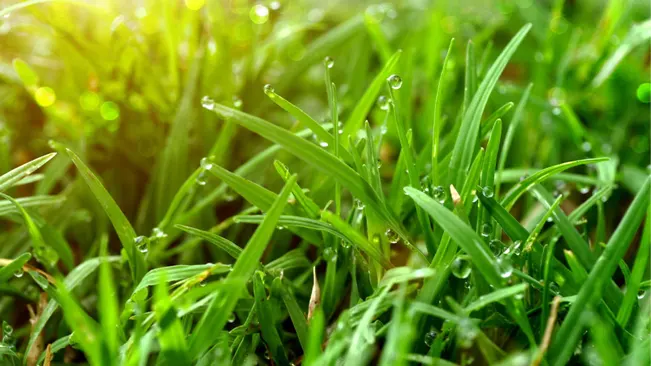
List of Bermuda Grass Calendar
- December, January, February: The Hibernation Period
- March, April: Spring into Action
- May, June: Growth and Protection
- July, August: Maintenance Mode
- September: The Last Push
- October, November: Sit Back and Relax
What is a Bermuda Grass Calendar?
A Bermuda grass calendar is your ultimate guide to keeping your lawn healthy year-round. It breaks down the best times for essential tasks like mowing, watering, fertilizing, aerating, dethatching, and even overseeding if needed. This schedule also includes tips for using pre-emergent and post-emergent herbicides to control weeds. Designed for warmer climates where Bermuda grass thrives, the calendar helps your lawn stay green and vibrant during the growing season and prepares it for dormancy in colder months. By sticking to a Bermuda lawn care schedule, you’ll give your grass the care it needs, resulting in a resilient and beautiful yard that stands out.
December, January, February: The Hibernation Period
During the winter, Bermuda grass enters dormancy, resting and recovering until the warmer days of spring. This phase is essential for the lawn’s health, so avoid aggressive care activities. Instead, focus on Bermuda grass maintenance, particularly weed control. Winter is the perfect time to apply pre-emergent herbicides, which prevent weeds from germinating and taking over your lawn.
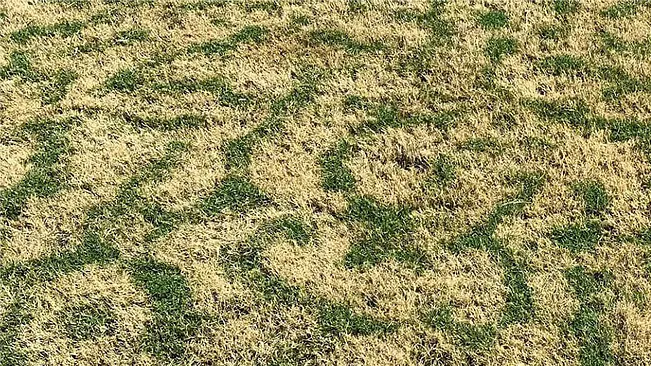
By managing weeds during this dormant period, you’re setting the stage for a smooth transition into spring. When the growing season begins, your Bermuda grass will be ready to thrive, free from the competition of invasive plants.
March, April: Spring into Action
As winter fades and spring arrives, Bermuda grass begins its transition from dormancy to active growth. This is the perfect time to take proactive steps to promote a lush, healthy lawn. Start with scalping, a technique where you mow the grass very low, almost to the soil. While it may seem extreme, this removes old, dead layers and encourages fresh green shoots to grow. Avoid applying granular treatments right after scalping, as they can be swept away during the process, wasting valuable nutrients.

Once the grass begins to recover, focus on a proper Bermuda grass fertilizer schedule to support strong, vigorous growth. With the right timing and care, your lawn will thrive, creating a beautiful, green landscape for the season ahead.
May, June: Growth and Protection
As the days warm up, Bermuda grass thrives, soaking up the heat and entering its peak growing season. This is the time to adjust your lawn care routine, especially fertilization. Switching to a 25-10 fertilizer mix provides the nutrients needed for vibrant, green growth. To boost results, consider a nitrogen spray for an extra dose of vitality that promotes a thick, lush lawn.
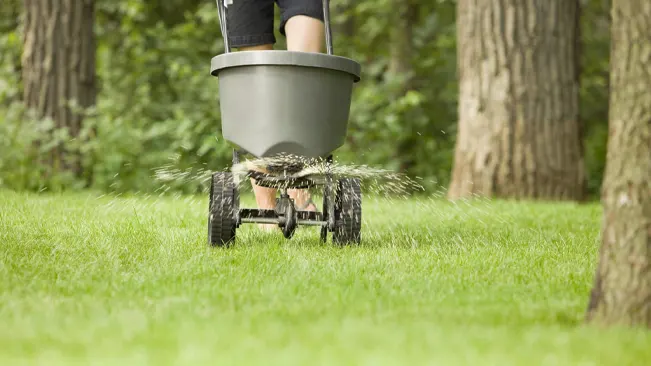
While your Bermuda grass flourishes, stay vigilant for pests or diseases. Spotting and addressing these issues early ensures your lawn remains healthy and beautiful, ready to impress all season long.
July, August: Maintenance Mode
July and August bring a more relaxed pace to Bermuda grass maintenance, reflecting the easygoing vibe of summer. During these months, focus on two key tasks: regular mowing and consistent watering. Keeping your grass trimmed short promotes the dense, lush growth Bermuda grass is known for. With summer heat in full swing, proper watering becomes essential to prevent stress from dry conditions.
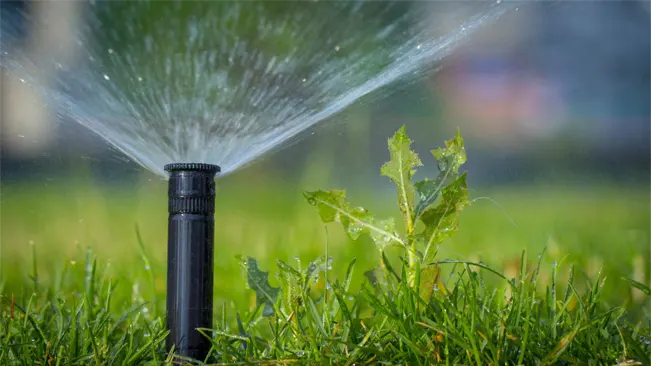
A consistent Bermuda grass watering schedule ensures your lawn stays hydrated and healthy, even during heatwaves. By sticking to this simple routine, you’ll keep your lawn vibrant and beautiful while enjoying the laid-back spirit of summer.
September: The Last Push
As fall sets in, marking the end of the growing season, it’s time to prepare your Bermuda grass for winter dormancy. Start by applying a balanced fertilizer to strengthen the grass roots, helping them stay healthy and resilient through the colder months. This step ensures your lawn is ready to bounce back strong and vibrant when spring arrives. Fall is also an ideal time to apply a pre-emergent herbicide, preventing weed seeds from germinating and taking over your yard.
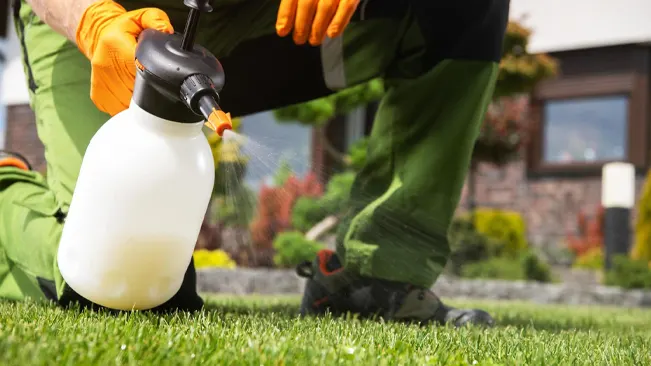
By fortifying your lawn and addressing potential weeds now, you’re setting the stage for a lush, pristine landscape when your Bermuda lawn care schedule picks up again in spring.
October, November: Sit Back and Relax
As cooler months set in, Bermuda grass transitions into dormancy, and your lawn care tasks wind down. This phase is more than a break for your grass—it’s a chance to reflect on your efforts throughout the year. The lush, green lawn you’ve cultivated is now settling in for its well-earned rest.
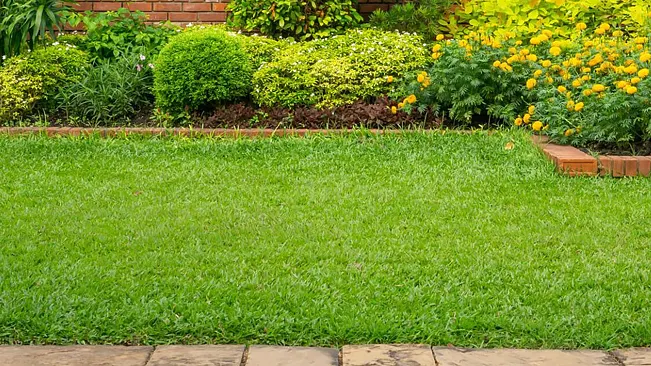
With fewer tasks to manage, take this time to appreciate the beauty of your yard and the results of your dedication. It’s a rewarding pause that sets the stage for another successful growing season next year, with even more vibrant results to look forward to.
Pre-Emergent: The Secret Weapon
It’s hard to overemphasize just how crucial pre-emergent treatments are for keeping your Bermuda lawn looking its absolute best. Think of it as your lawn’s personal bodyguard, applied three to four times annually to fend off unwanted weeds before they even have a chance to sprout. This proactive approach is key to making sure that it’s your lush, green grass that’s getting all the attention, not the pesky invaders trying to steal the spotlight.
Lawn Maintenance Must-Dos
Taking care of a Bermuda grass lawn involves several key practices that are essential for maintaining its health, appearance, and vitality throughout the year. Here’s a detailed look at each of these crucial lawn care activities:
- Scalping: As winter fades and spring emerges, scalping becomes a critical task. This process involves cutting the grass very low to remove the old, dead growth from the previous year, allowing sunlight, air, and nutrients to reach the soil more effectively. Scalping encourages the dormant Bermuda grass to wake up and start putting out new, healthy growth, setting the stage for a vibrant lawn in the coming months.
- Dethatching: Thatch is a layer of dead grass, roots, and debris that can build up on the soil’s surface, blocking water, air, and nutrients from reaching the grass roots. When this layer exceeds half an inch, it’s time for dethatching. This process involves using a specialized tool to remove the thatch, ensuring the lawn can breathe and absorb essential resources efficiently, promoting healthier growth.
- Fertilizing: The nutritional needs of Bermuda grass vary with the seasons. During the growing months, it’s important to use nitrogen-rich fertilizers that support vigorous growth and the deep green color characteristic of healthy Bermuda grass. Tailoring your fertilizing approach to the specific needs of your lawn at different times of the year ensures it receives the right nutrients at the right time, fostering optimal health and appearance.
- Watering: Proper watering practices are crucial, especially for lawns planted in clay soils, which can be prone to water runoff and poor absorption. Adopting smart watering techniques, such as watering deeply but less frequently, encourages the roots to grow deeper, seeking moisture and thus becoming more resilient. This approach ensures the lawn is adequately hydrated without wasting water or causing unnecessary runoff.
- Cutting: Regular mowing is essential for maintaining the health and aesthetics of Bermuda grass. Keeping the lawn short and mowing frequently encourages denser growth, discouraging weeds and pests, and maintaining the thick, lush appearance that Bermuda grass is known for. It’s important to adjust the mowing height and frequency based on the grass’s growth rate and the season to keep your lawn looking its best.
Conclusion
There you have it, a Bermuda grass calendar that demystifies lawn care and makes it accessible to everyone. Whether you’re a seasoned green thumb or a lawn care newbie, following this guide will ensure your Bermuda lawn is the pride of the neighborhood. Share this knowledge with friends, neighbors, and your homeowner’s association, and let’s transform our lawns together.
FAQs
- What is the best time of year to start a Bermuda grass lawn from seed?
The ideal time to sow Bermuda grass seeds is late spring to early summer when soil temperatures consistently reach 65°F or higher, ensuring the best germination and establishment. - Can Bermuda grass thrive in shady areas?
Bermuda grass prefers full sun and may struggle in shady areas. For lawns with moderate shade, consider a grass blend that includes shade-tolerant species. - How often should Bermuda grass be watered during peak summer months?
During hot, dry periods, Bermuda grass should be watered deeply 1-2 times a week, allowing the soil to dry between waterings to encourage deep root growth. - Is it necessary to aerate Bermuda grass, and if so, when?
Yes, aerating Bermuda grass is beneficial, especially for compacted soil. The best time for aeration is in the late spring or early summer when the grass is actively growing. - What type of fertilizer is best for Bermuda grass, and how often should it be applied?
Use a nitrogen-rich fertilizer for Bermuda grass. Apply in the late spring after the last frost, then every 4-6 weeks during the growing season, with the last application in early fall. - How can I control weeds in my Bermuda grass lawn without harming the grass?
Apply a pre-emergent herbicide in early spring before weeds germinate and a post-emergent herbicide for any existing weeds, making sure both are safe for use on Bermuda grass. - What should I do if my Bermuda grass lawn is turning brown in patches?
Brown patches can be due to pests, disease, or watering issues. Identify the cause first—treat for pests or disease as necessary and adjust your watering schedule to ensure even coverage. - Can Bermuda grass be overseeded with another grass type for winter greenery?
Yes, Bermuda grass can be overseeded with cool-season grasses like ryegrass in the fall for green winter lawns. Just remember to mow the Bermuda low and remove thatch before overseeding. - How do I prepare Bermuda grass for winter?
Gradually reduce watering as the weather cools, apply a potassium-rich fertilizer to enhance cold tolerance, and raise the mowing height to leave the grass slightly longer for winter protection. - What’s the best way to repair bare spots in a Bermuda grass lawn?
Rake the area to remove dead grass and loosen the soil, sprinkle Bermuda grass seeds, lightly cover with soil, keep the area moist until seeds germinate, and avoid heavy foot traffic during this time.

Charles Hayes
Forestry AuthorI'm Charles Hayes, I bring over 15 years of specialized expertise in landscaping and woodworking, blending artistic design with sustainable environmental stewardship. My career, fueled by a profound passion for the natural world, encompasses extensive education and hands-on experience in creating harmonious, eco-friendly outdoor spaces and responsibly managing forest resources. Recognized for my professional standing, I am committed to continuous learning and certification in cutting-edge practices. My expertise is not only reflected in my work but also in my contributions to community projects, educational workshops, and collaborations with industry leaders. As an authoritative voice in my field, I strive to share knowledge and promote environmentally conscious approaches, making me a trusted resource in landscaping and forestry.
2 comments
Thank you very much. This schedule is a lawn saver for me. Question - it is early April and I am dethatching my lawn. I have several problem areas where I need to use a fungicide and I would also like to apply a post emergent weed product. Does it matter in which order? Also I would like to put down new soil and either seed or sod in trouble areas. Can you advise me of the order in which I should do these steps and if there is a wait period in between any of them? Thank you so very much. If you do not have time to reply I completely understand and again, I am truly thankful for the schedule. Sincerely Paula A.











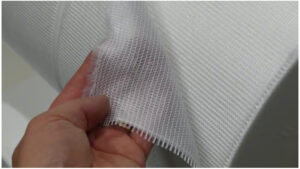

It’s June can I aerate and fertilize at the same time
Pat lineberry
June 12, 2024 2:31 am